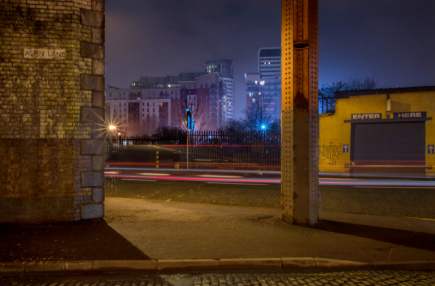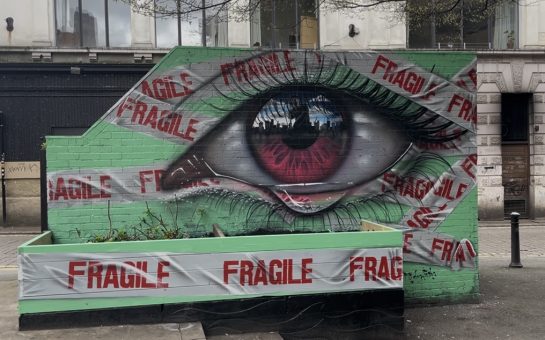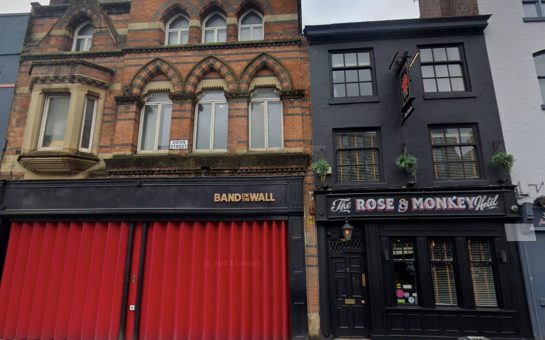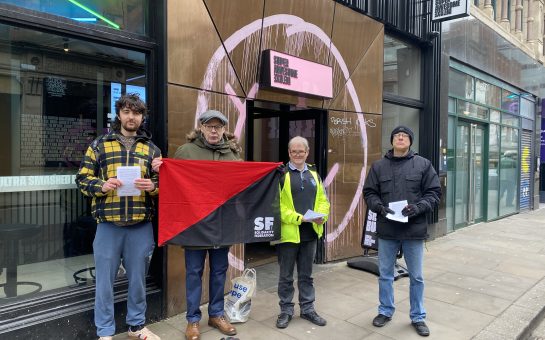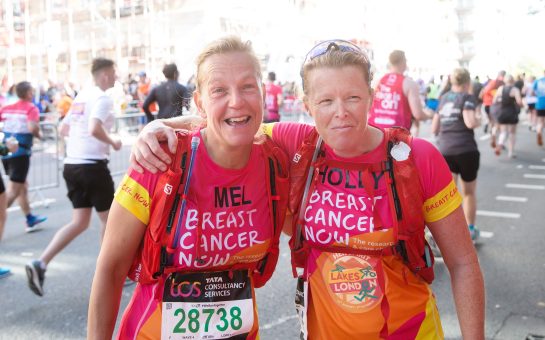There aren’t many places where Manchester’s brutal industrial heritage brushes up against its modern infrastructure.
But while passing through Angel Meadow Park one night in 2015, close to where impoverished mill workers were laid to rest, artist Simon Buckley was struck by the dissonance of the scene before him.
“I was living in the Northern Quarter, sharing a flat with a friend of mine at the time, and we used to walk his dogs there,” he says as we share a coffee on Tib Street.
“I was standing where 40,000 people are buried looking up at the light from the new CIS building.”
In the shadow of the high rise, an archetype of the city’s new development agenda, he posed a question: “If this light could magically bring these souls back to life, what would they make of their city today?”
The result was Not Quite Light, a project mixing photography, writing and podcasts that set out to capture the city’s social transformation through its architecture.
“It’s a story of the buildings and the environment we’ve created,” Simon explains. “We talk about where we come from – our streets, our structures. This was about asking why we have made them.”
‘DANGEROUS, DERELICT, CRUMBLING’ MANCHESTER
Growing up in Bolton during the 1970s, such a story interweaves with Simon’s own history.
“As a schoolboy, I’d walk past mill buildings and chimneys,” he says. “Bolton’s a town of hills, and so the classic landscape of chimneys sticking up out of them was still there.”
Later, he swapped these soaring smokestacks for Manchester’s ebullient cultural scene. “In the 80s, music tribes were a thing and Manchester was where you came to get your clobber, so it was a magnate,” he says.
“You came here as a teenager to basically create your identity.”
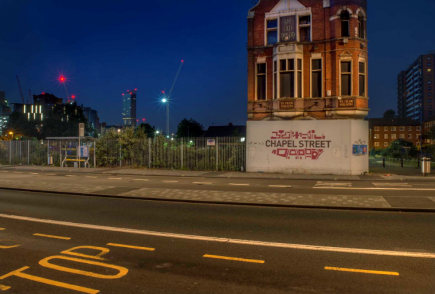
This was a fabled era in Manchester’s history. The Smith’s introduced indie music to the world, New Order rose from the anguish of Ian Curtis’ death while The Stone Roses emerged with a record that defined the psychedelic revival.
But Simon’s at pains not to glamorise the city’s structural condition during this period.
“Manchester was going through the start of some very difficult economic times back then,” he says. “It was dangerous, and it was derelict; it was crumbling, and it was hard – and something had to change. It couldn’t have just been left like that.”
Today, changes are abundant. Glass fronted office towers jostle for position across Deansgate, whilst the few remaining red brick warehouses now hold apartment complexes and start-up firms.
It’s a transformation that echoes the call of successive politicians, who set out to reinvent the city in 2010 as a ‘Northern Powerhouse’ with foreign investment.
Beneath this shiny new exterior, Simon’s aware that deprivation remains.
“Away from the city centre, it’s still pretty much as it was five, ten, 15 years ago. There’s a lot of poverty, and the working-class communities are still very embedded.
“My interest is in archiving this change for us to look back on, and so that historians can look at the decisions made here.
“I don’t feel Manchester has learnt its lesson from the inequalities created by the industrial revolution.”
Not Quite Light emerged as the vehicle for this inquiry. The project’s initial phase took place in the North West of the city in 2015 – From Old Mill to The End of Empire.
Simon took photos of this area during the dawn hours, a period referenced in the project’s title.
LIKE A LOWRY
“Dawn was always a metaphor, from the old into the new,” he explains. But beyond this, the images reveal the rawness and beauty of the city’s aesthetics, unencumbered by pedestrians and cars.
In his photograph “Sherbourne Street, Cheetham Hill, 7.22 am”, lampposts illuminate a slick stretch of tarmac leading up to Strangeways prison.
The hulking 1850s lockup is an eerie sight at the best of times. But the deathly quiet scene that Simon captured conveys the building’s fear-stoking majesty, set against the city’s glinting skyline.
“It’s interesting to see people at that time of day,” Simon says. “Nobody really wants to be there at dawn. I often notice that people walk looking down and at a particular speed.”
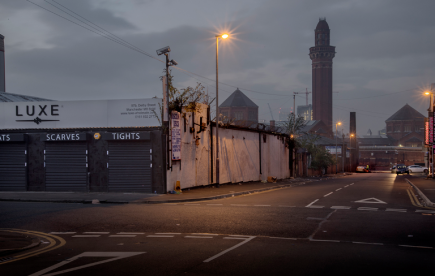
That said, not all of his interactions, alone with a camera, are so innocuous. “There were two particular times when I felt it was going to go wrong on me,” he murmurs with a grin when I ask about this.
One of those took place at 6 am, just off Bury New Road, Salford, during the second phase of Not Quite Light. After setting up his tripod in an area known for drug deals, he was “buzzed” several times by a circling moped rider.
“Instinct took over and I bundled my possessions into the car, before hurriedly departing. It felt ignominious,” he wrote in a journal entry from the time.
Not Quite Light is now in its fourth year. Following on from its success, Simon created a podcast series on Reform Radio. Then in 2016 he launched a festival dealing with themes on the “built environment and exploring the city”, scheduled again for 2020.
Most recently, a shot he took of Deansgate in a rainstorm went “viral”, gaining thousands of Instagram likes and getting printed in the Metro and Guardian newspapers. Actor and comedian Stephen Fry heaped further praise, comparing it to one of L.S. Lowry’s paintings on Twitter.
Someone took this photograph round here the other day. Nature imitating art, as Oscar would say, and giving a very fair version of a #lowry (sorry I can’t credit the photographer – hope they don’t mind) pic.twitter.com/a6blUVAWmK
— Stephen Fry (@stephenfry) August 22, 2019
As we finish up, he mentions print sales from this have afforded him the chance to complete the final phase of the project.
“Literally next week or the week after I’ll probably be out at dawn,” he confirms. “I see this last part as being the end of an era. It’s not that Not Quite Light will finish, it just needs to evolve.
“There will come a time when people say, “Oh, he’s not still taking those fucking dawn pictures of the city?” he adds nonchalantly.
“It will start to become a pastiche, and I need to be aware of that because my work will become lazy and dull.”
For now though, the pictures continue to offer poignant insights into the grace and harshness of Manchester’s shifting landscape, posing crucial questions to whether we’re simply replaying the mistakes of the past today.
